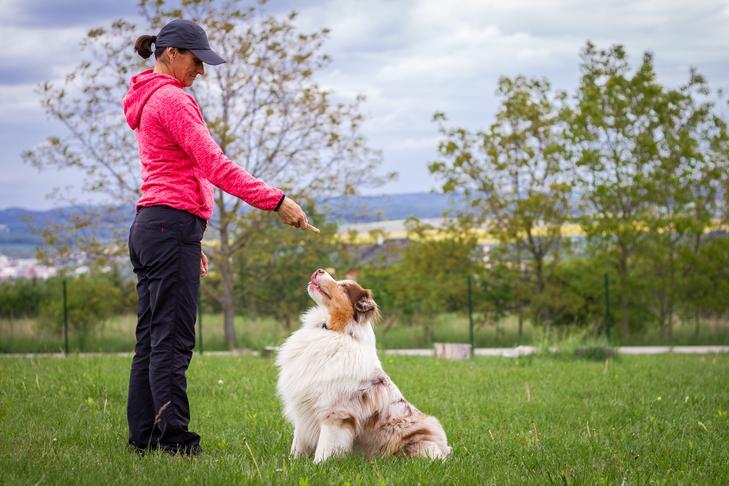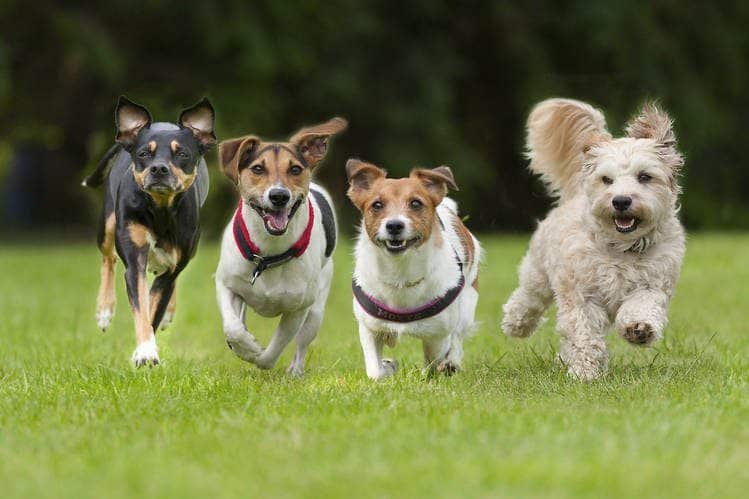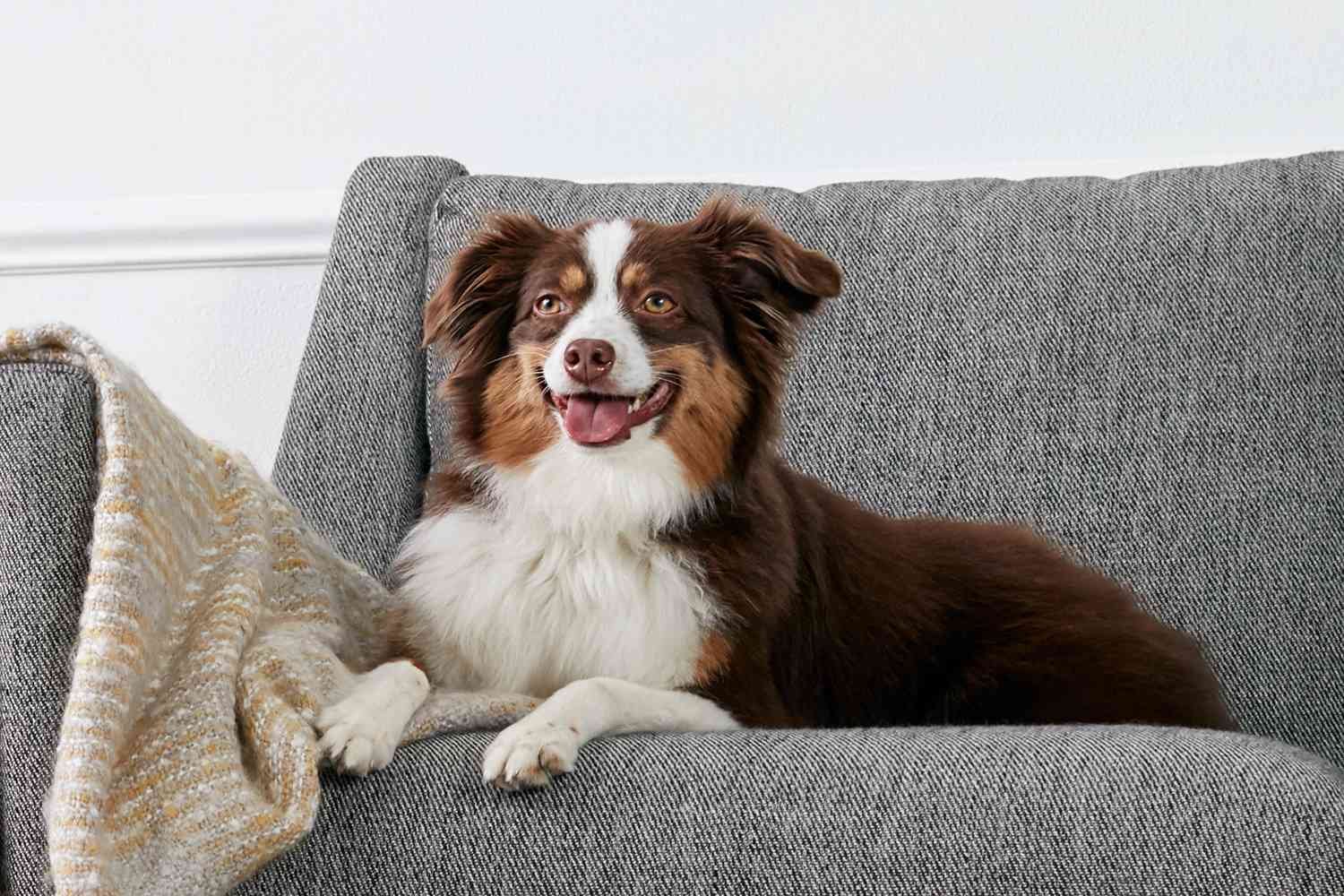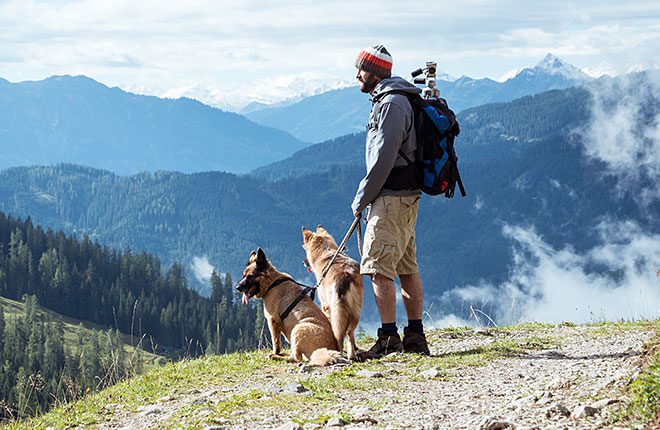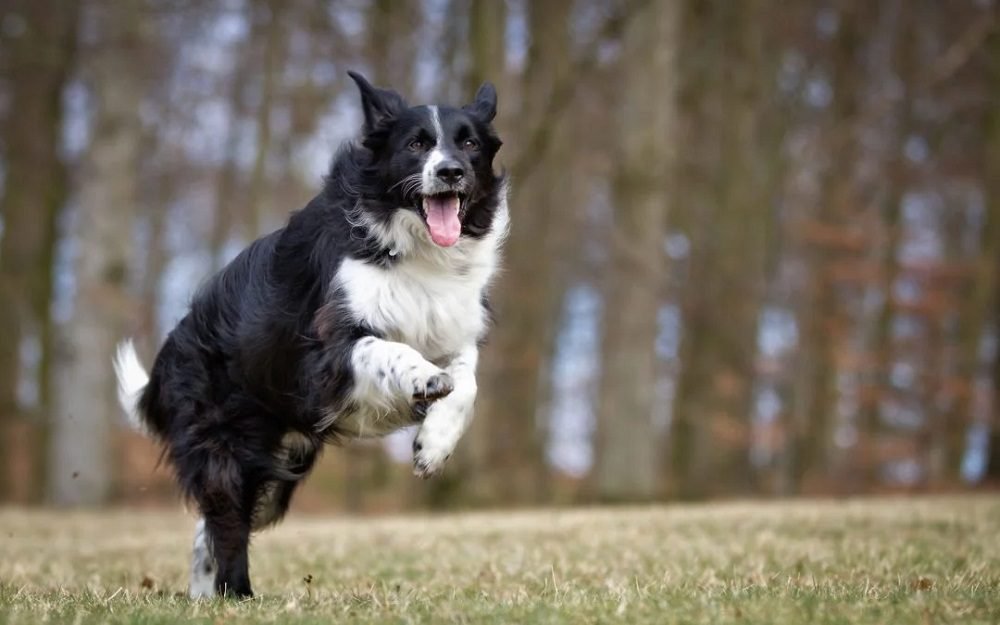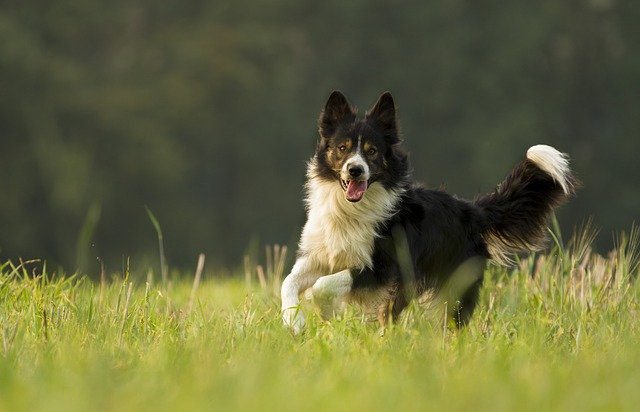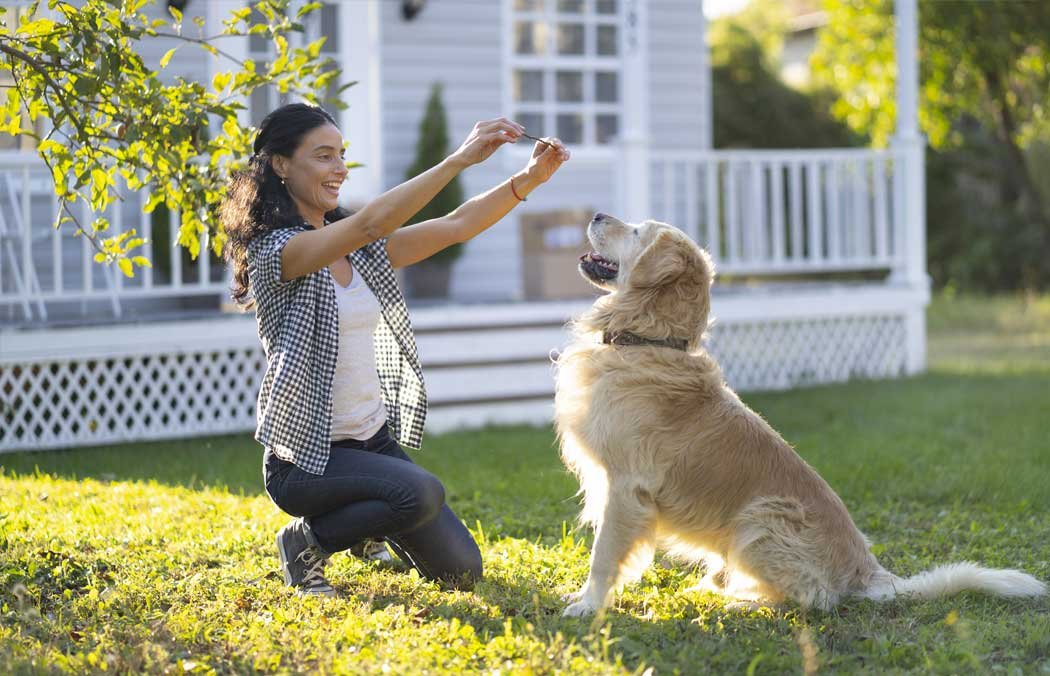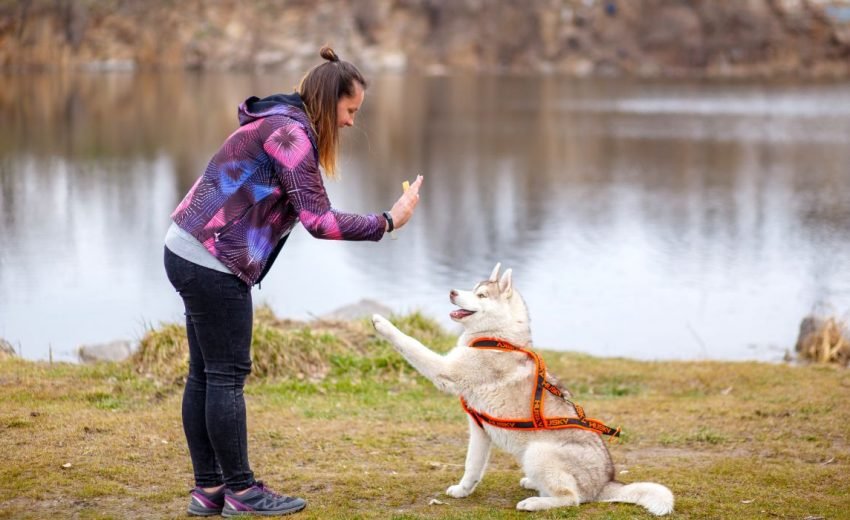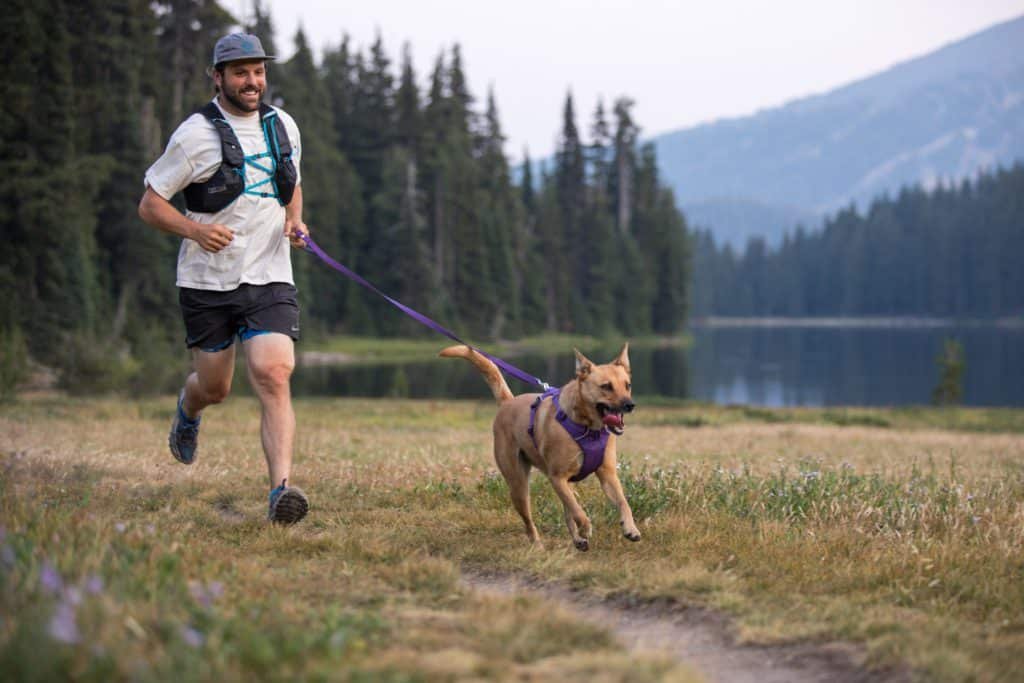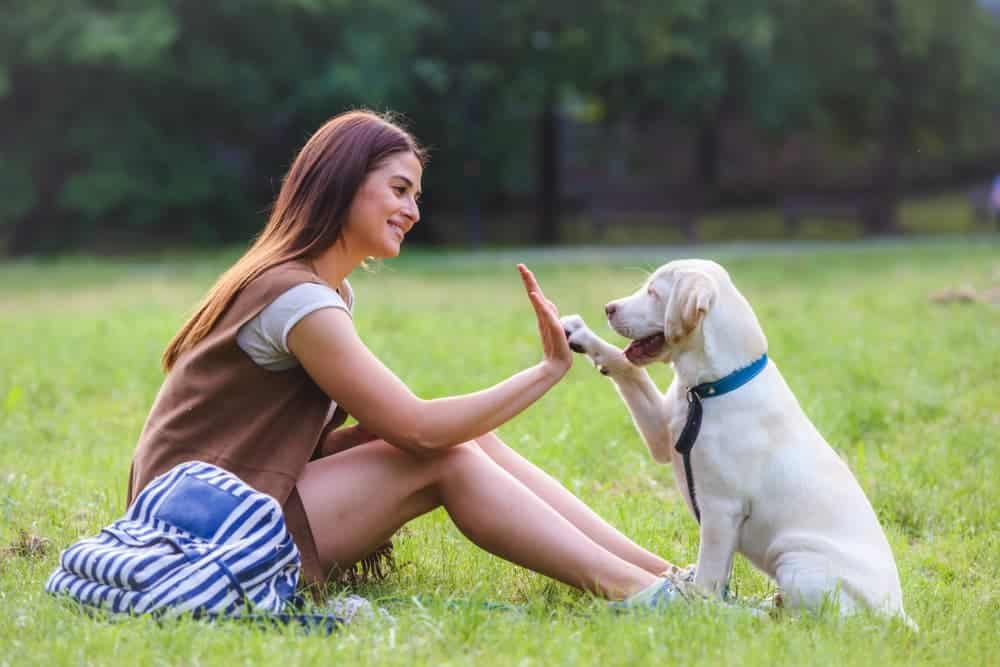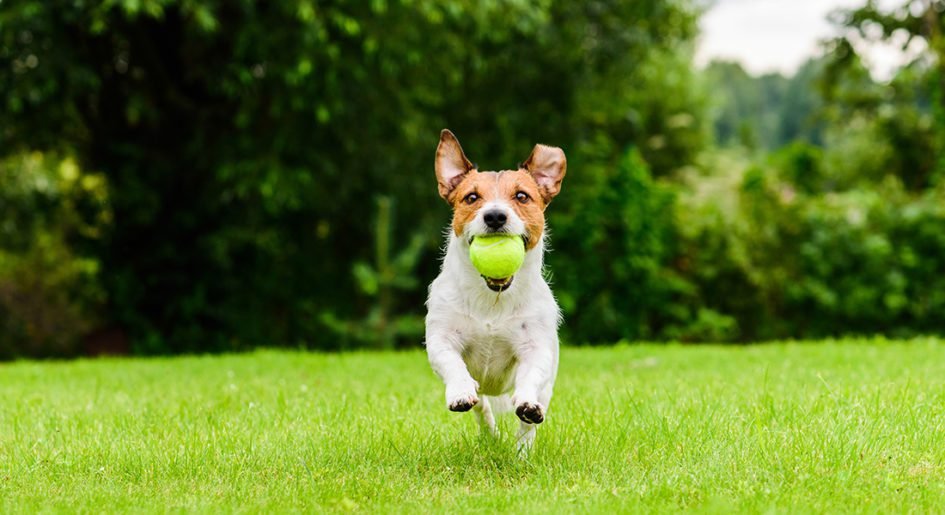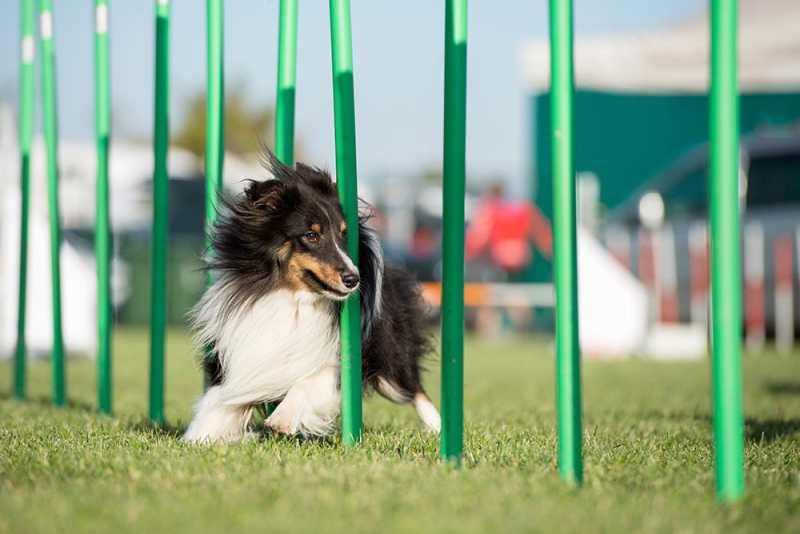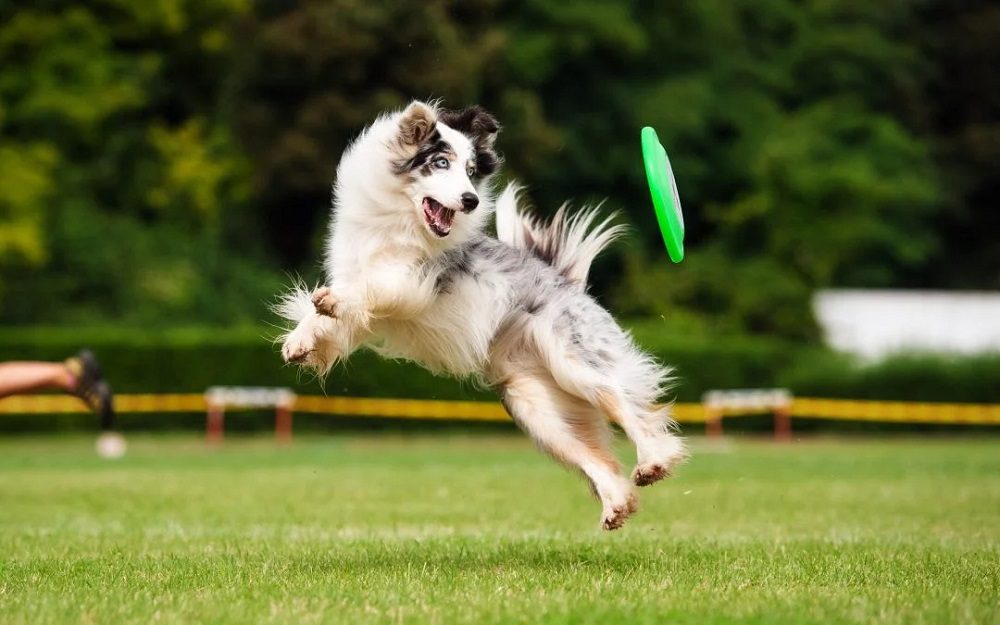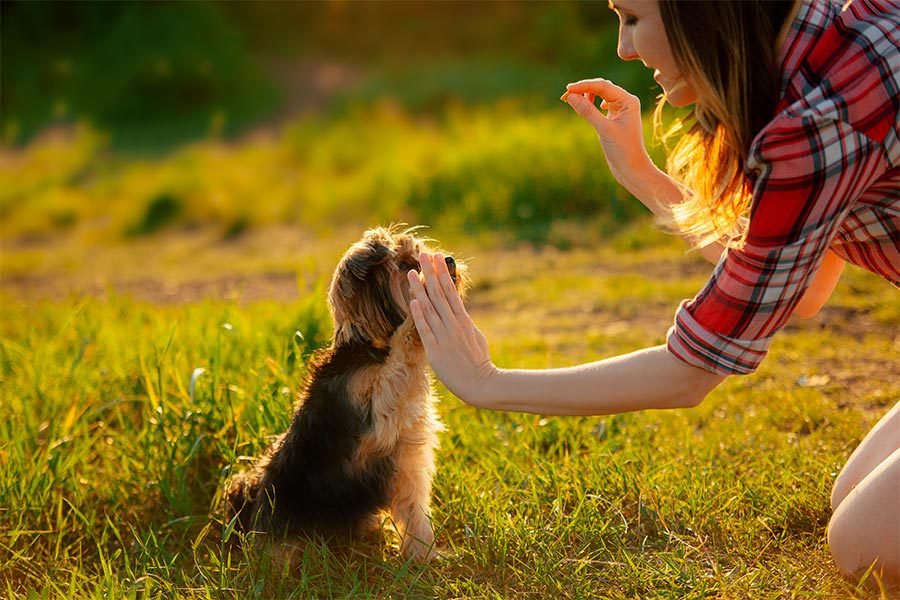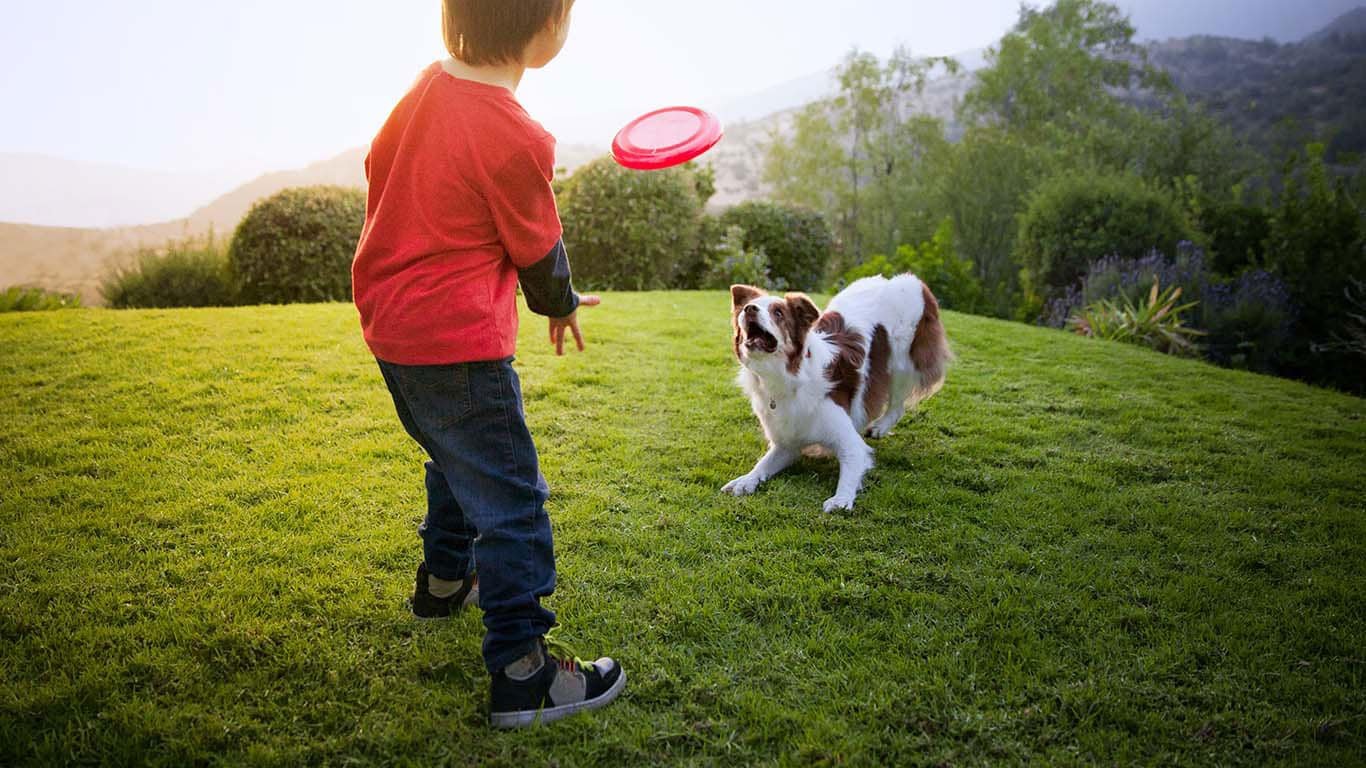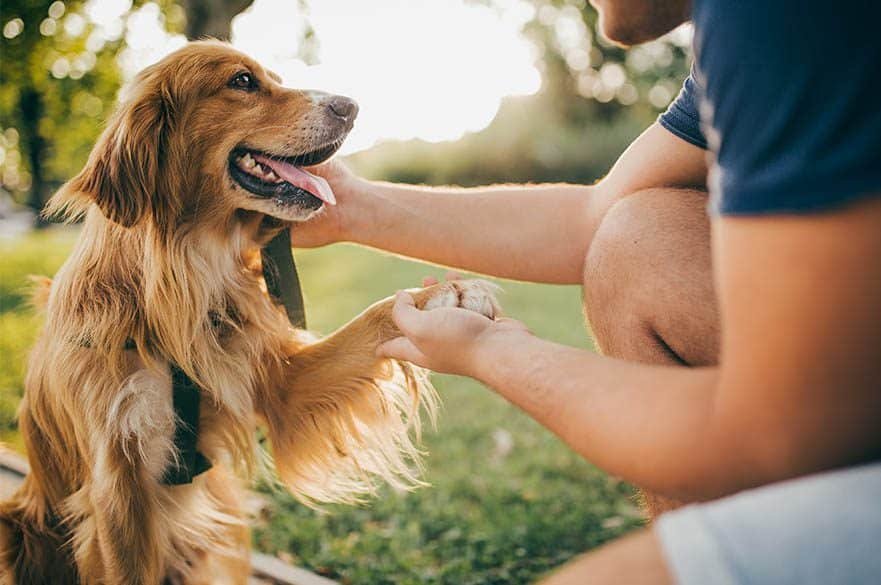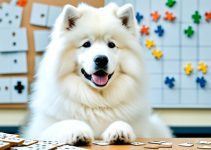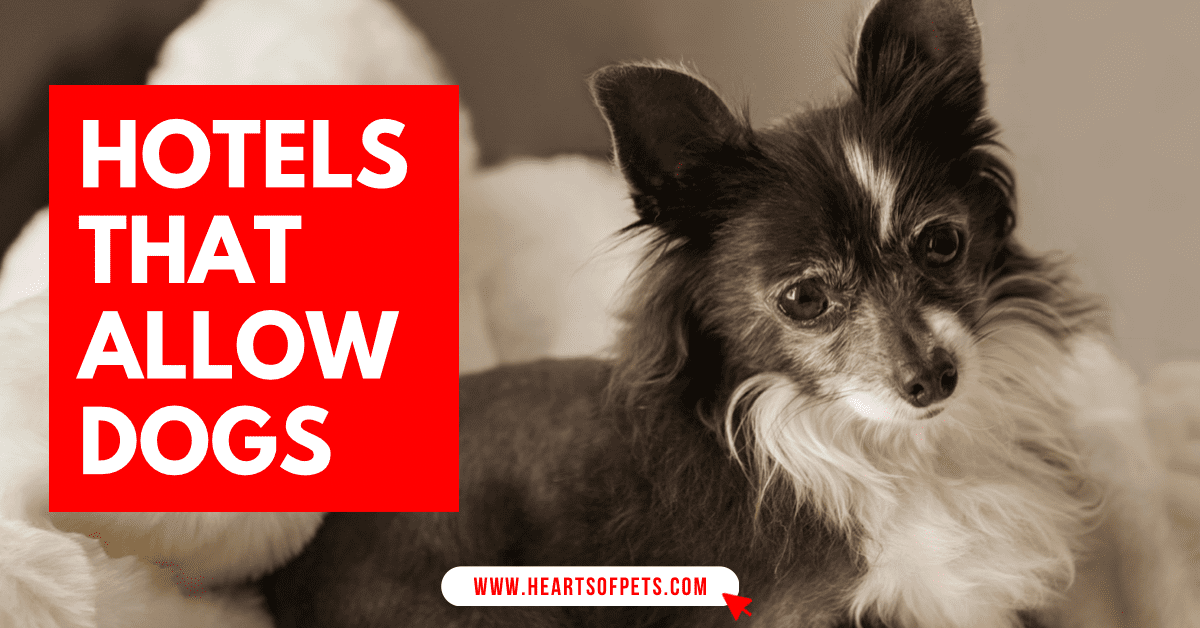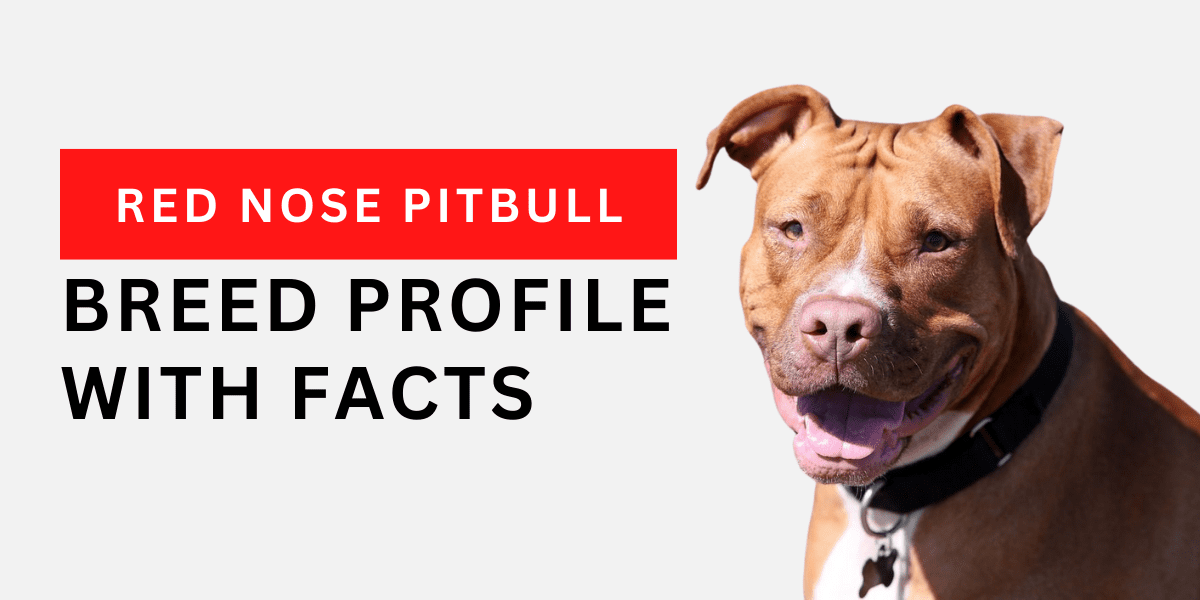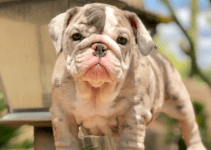The reactivity of your dog can be an issue. That’s why reactive dog training is a must. You might not have the luxury to go out for a walk without worry because he’s showing signs that his leash response is too high, or being able to participate in fun group training sessions with other dogs who are also reactive would make you happy – but right now it seems like all these potential interactions keep getting postponed indefinitely as they SkillsPractice teach us how vital understanding canine behavior was.
Do your dogs’ bark, lunge, and growl at other dogs or people when they’re out in public? If so, you may be wondering how to help them. Thankfully, there are many ways to train a reactive dog. This guide will discuss some of the most common methods to help these furry friends calm down and behave better in social situations. Keep digging!
Reactive Dogs Are Uneasy
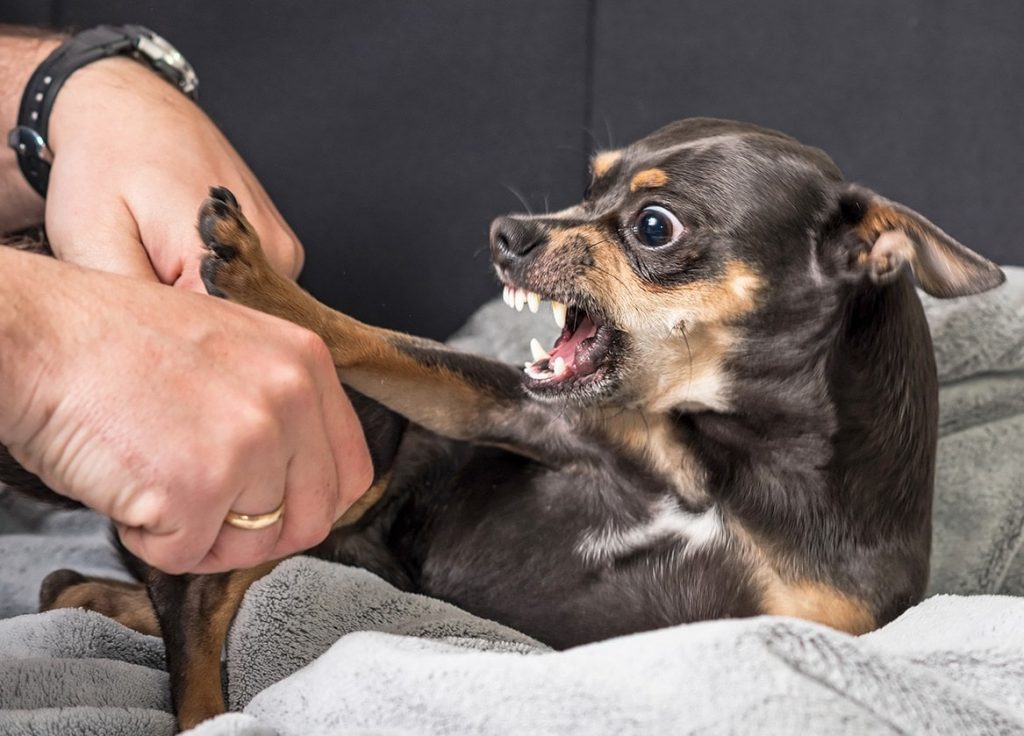
You never know how your dog is feeling. They can be expressive and loving or intimidating and act out of fear, but you’ll want to ensure they’re happy before doing anything else.
Some dogs prefer to retreat, and some will go for an outright confrontation when faced with a situation that makes them anxious. It is essential to know how to handle a very reactive dog.
When a dog faces an enemy to its right or left, it will often charge at them to maintain dominance. You can often see it getting ready to happen through their tense or stiff body language. Most reactive dogs do show signs; they don’t typically just attack other dogs out of the blue.
We reactive dog owners can’t cure this discomfort by scolding our dogs. It’s only going to make him more anxious! In his mind, if you punish him for showing stress through barking or lunging, the situation is probably really critical.
Instead, always make it part of your dog training to be calm always and collected when your dog gets scared. Just take his leash in hand so you can move away from the situation until he is more relaxed with a happy attitude.
It may be pretty necessary to employ a certified professional dog trainer to help you get this undesirable behavior under control. Dog trainers have experience in this field and can help you develop an effective behavior modification program that will lead to your dog’s ultimate success behaviorally.
But of course, in the long run, we want our dog not only to be able to avoid lash-out reactions in general – but also to change his initial response through practical training!
And here is how we do it:
Helping through a reactive dog training
Luckily, there is not only a possible but also an easy way to address negative emotions.
In psychology, we have learned about the physical and mental changes that occur in response to different situations. Just like with humans, there is usually something triggering dog reactivity. It’s up to us as dog owners to figure out what that is and how we can avoid it and get calm behavior out of our dog instead.
When you have a highly reactive dog, it feels a lot of stress and anxiety when it sees another dog. With the help of reactive dog training, you can teach your pup how to control his aggressive behavior. As a result, he will be able to feel more at ease around other dogs and even enjoy being with them! He might even make dog friends in the process.
What does a dog love the most? Of course, it would have to be food. And what better than human food, right? When developing a training plan, food and treats should be considered as part of the incentive to help get to the desired behavior.
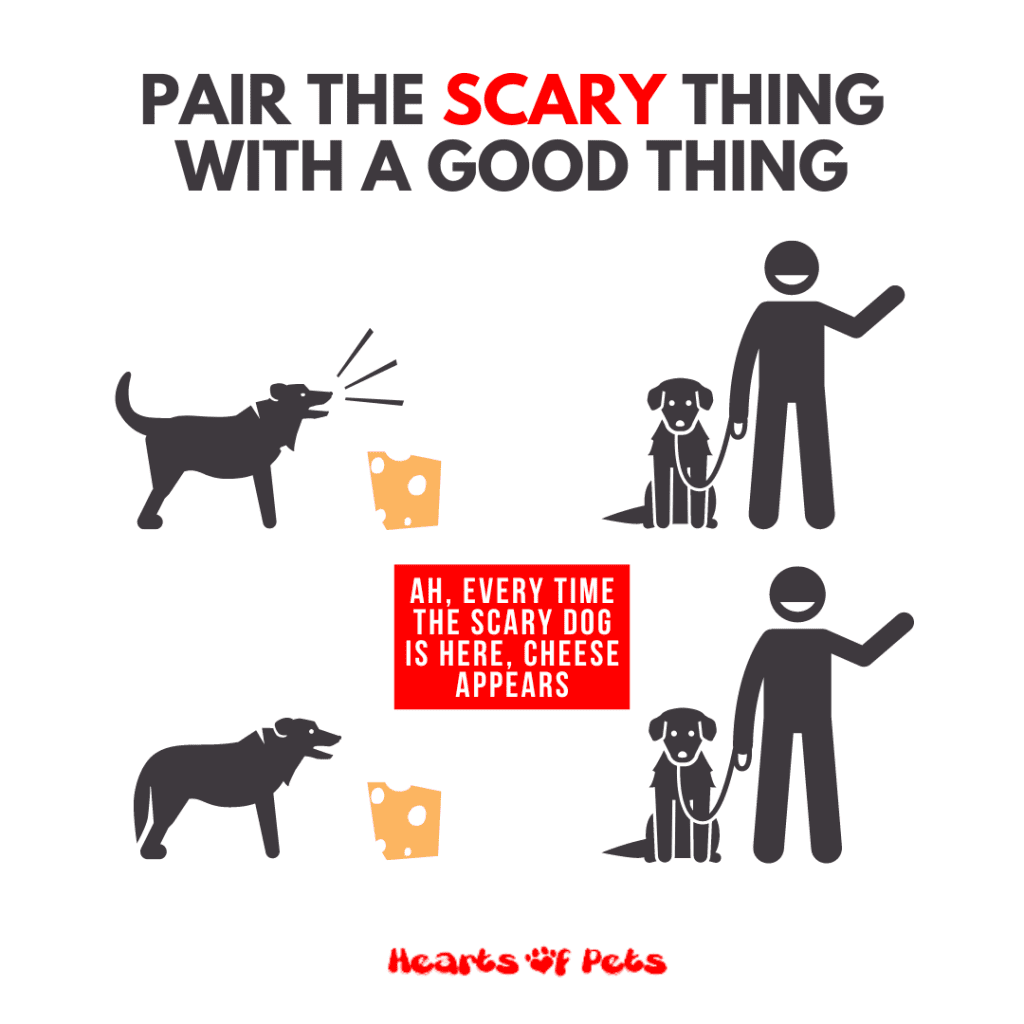
Please include it by finding something special for your pup. Maybe he likes steak or chicken, and you know what makes him happy. Your dog will be more comfortable and relaxed when eating this food. Make sure it’s only for use in the reactivity dog training, so don’t feed it to them any other time.
This simple trick is ready to set your dog’s mind at ease. Ask a friend or family member if they could come over and bring their pet so that the two can get acquainted sooner rather than later – feed them both treats from afar when you see each other.
During reactive dog training, leave the situation the next time your dog starts getting aggressive with other dogs. Then stop feeding him for a few minutes so he learns that only scary dogs can make his favorite food appear.
Repeat this as often as possible.
Start close and work your way out. Dogs should never feel overly stressed or anxious during this process, so give them plenty of space to calm down as needed.
It is vital to keep your dog’s stress level in check because if he becomes too edgy, the brain will not be able to learn anything new. You can make this easier on both of you by increasing the distance between treats and food bowls until it no longer seems appealing for him to eat any at all.
During reactive dog training, the most important thing you can do for your dog is to keep under his stress level. If he feels stressed, don’t push him too far or quickly because this could worsen things.
The dangers of setting your dog back are genuine. You cannot push too hard when modifying unwanted behavior; reactivity training requires time and patience with your pup; eventually, you will get a more relaxed body language, and you will see your dog’s behavior begin to shift.
The best way to succeed in reactive dog training is by being patient and taking things one step at a time. Once your dog’s reactivity has been cured, you will be able to enjoy success with them for the rest of their life.
Dog Reactivity Chart
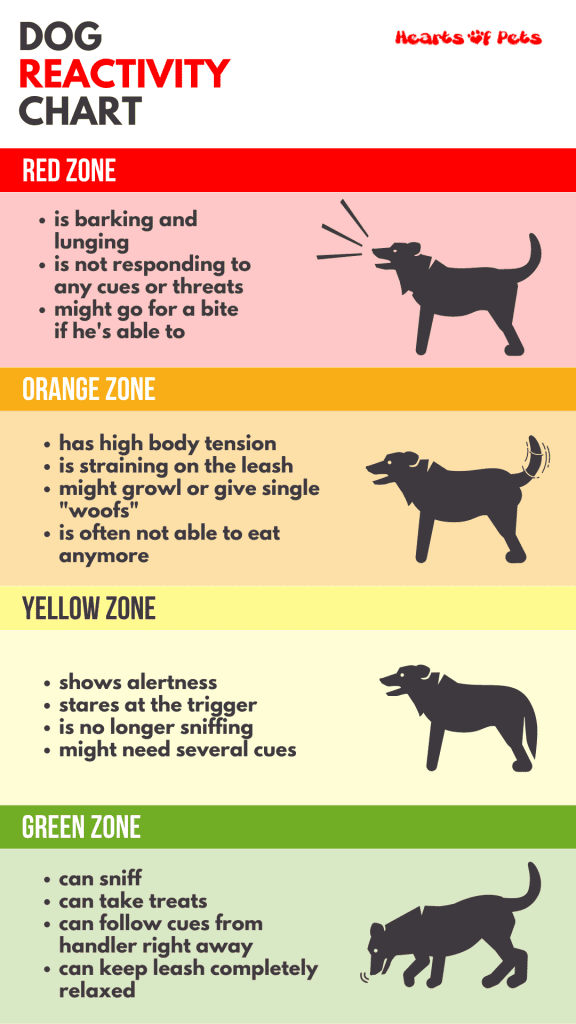
Refer to our Hearts Of Pets reactivity chart when you are approaching any triggers that might make your dog show a reactive response. Dog’s triggers fall into several types of zones.
There are many different zones in this chart.
Your reactive dog is in the green zone when he can sniff, take your treats and follow cues right away. Keep a loose leash for a happy pup! A far-from threshold type of guy isn’t reactive at all – it just looks that way because you’re not forcing him into an explosive response.
You may be surprised to learn that small amounts can still work even though your dog is in the yellow zone of reactivity. The key here is a lot fewer treats than before! Your pup should not strain towards any triggers when taking them from you- rely on good old-fashioned handouts for now while we see how this plays out with reactive dog training and behavior modification techniques later down the line if needed.
Our reactivity chart is telling us that a dog in the orange zone has just moments away from blowing up! This isn’t a state of mind for making new memories. All he’ll be able to remember are his stressful events, and you should get out while there’s still time left before things turn south with this one!
The dog in the red zone is displaying signs of increased reactivity. He’s unable to respond or acknowledge any cues from his handler, which has escalated their behavior by lunging and barking at him while they’re close enough for this kind of reply.
Why is my dog getting more reactive?
Have you noticed your dog’s reactions getting worse as time goes on? Maybe it has seemed like no matter what techniques we use, he escalates and becomes more reactive. This might be because your pup spends too much of his day in the orange phase (the early stages) on our reactivity chart.
Keep an eye out for these:
- The dog can’t respond to simple cues (such as his name, Come or Sit)
- The dog is pulling hard on the leash.
- Stiff tail (the tail might be straight up in the air and could even be wagging)
- Stare so hard that he can’t bark.
If you see your dog displaying these behaviors frequently on walks, it might be time to take him out of situations that stress him out. Putting him into these over again will only make his reactivity worse. A dog’s environment should not constantly stress him out; it’s our job as pet owners to recognize the dog’s reactive behavior and negative dog body language and neutralize issues. Your dog’s life should be relatively stress-free; if not, it might be time to employ a professional trainer who can solve your dog’s problems.
Which dog breeds are the most likely to act aggressively?
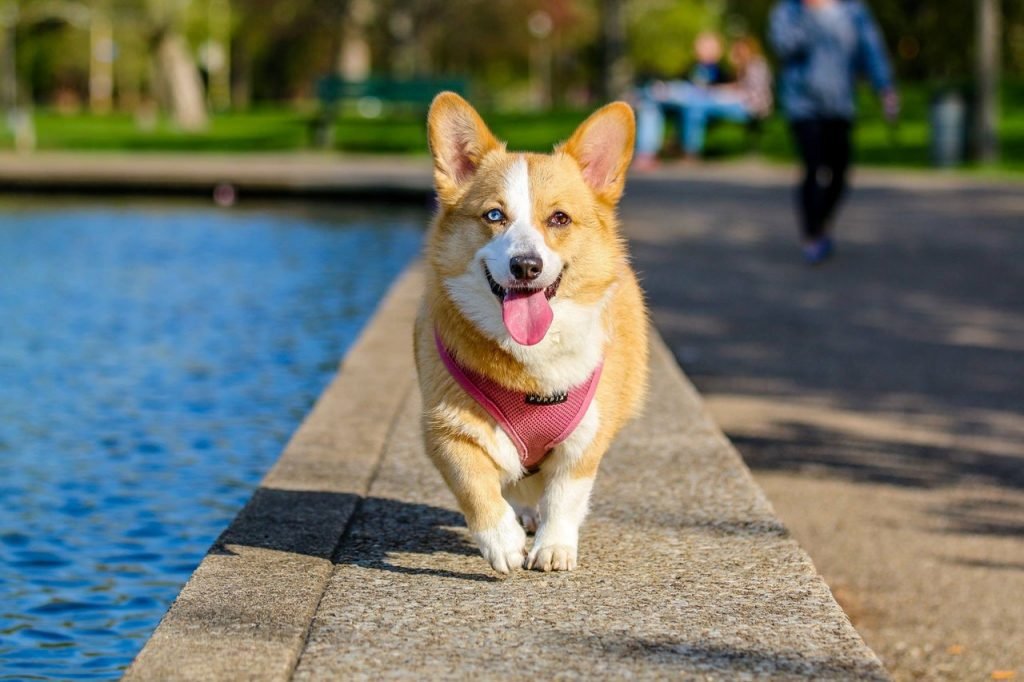
Before conducting reactive dog training, it must be noted that reactivity and aggression are not the same behavior. Reactivity can often become aggressive. Every breed can produce reactive dogs, but they are more prevalent in some than others. To understand which species are the most reactive, we must look at their origin.
All breeds except toy ones were initially bred to do something. However, the requirements for these jobs determine how they behave and can be utilized accordingly with different behaviors suited to one’s needs or desires.
The herding dogs of today are not the same as those that existed in ancient times. These modern-day varieties were developed to spend their days alone, surrounded only by sheep and other animals. They guard against intruders like wolves or people who would want access for whatever reason.
King Shepherd was bred to be a guard dog, but it now spends its days as an Instagram model. The classic example of this collision can be found in many modern-day dogs who were bred initially for one function yet live out another completely different role entirely because we keep them around. Reactive dog training must highly depend on the kind of dog breed you own.
The Australian Shepherd and German Shepherds are the breeds that owners experience the most reactivity during reactive dog training. These dogs tend to be very popular, so we often see some irresponsible backyard breeders producing them without enough time to socialize their nerves before breeding. Another breed that displays a lot of reactivity is the Doberman pinscher. Both small and large dog breeds can be reactive; don’t mistakenly think that size has anything to do with it.
How to Utilize a Dog Reactivity Chart
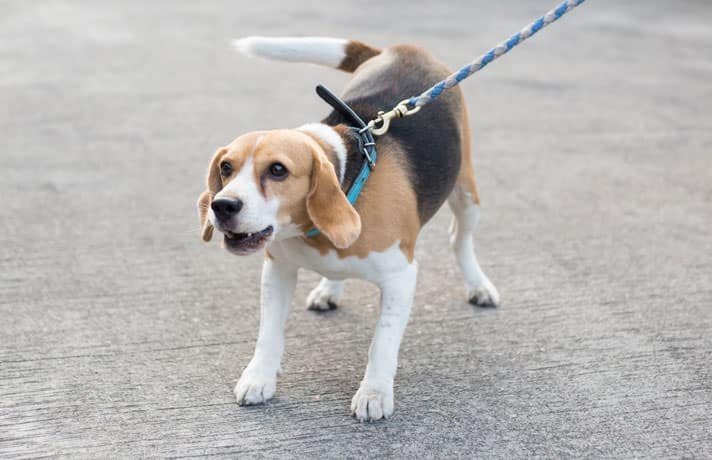
Take the chart along as you go on a walk with your dog for the reactive dog training and work to increase his reactivity. Make sure that he stays in the green or yellow zone but as soon as it is indicated by orange, then move out of its way, so nothing wrong happens from this trigger.
If you live in a busy area and find it challenging to use the reactivity chart, try walking your dog at off-peak times. If there are still people around when they’re bins or other things that could trigger their reactivity (such as children), stop for now! Walking past other dogs or anything that might be one of your dog’s triggers is a sure-fire way to get them upset early in the walk. You may want to pause as you get closer to these triggers and give your dog’s head a soft pat, hand them a couple of dog treats – generally provide them with a positive distraction so that you help your dog see the walk as a positive experience.
You’ll want to set up reactivity sessions for these dogs who can’t go on walks anymore. Ask a friend and their pup to meet in an open area- approach them from very far away while giving treats or letting him sniff around at ground level for a while; make sure the leash is loose, so he has room, and don’t worry if she’s tense because this will help with reactive dog training. Do not allow your reactive dogs to be off leash at a dog park until you are confident they won’t display reactive behavior. On the other hand, many dogs show severe leash reactivity, barking and lunging at other dogs running freely and approaching them. How you solve this will depend highly on how your dog acts at dog parks.
Have you noticed that your dog’s response has been yellow or green on the reactivity chart? Is he still in one of these zones and not changing with time like we want him to do during the reactive dog training? It might be because there are too many distractions around him; for example- find out what could have distracted them (like another animal), then try moving closer until they’re back under control!
What should you do if the dog you’re walking barks at another dog?
Growling and lunging at other dogs should not happen on a walk with your pup! You may wonder what you can do if he starts barking after another dog passes by. You can try telling him to stop, but this doesn’t seem like enough of an incentive for the moment that he sees the other dog.
I can tell you’re feeling frustrated, so I’ll keep this short. Your dog is in the red zone! No wonder he’s unresponsive and doesn’t do as requested. Walking away briskly will help clear up any confusion on handling things in the future.
Every second your dog spends in the red zone is dangerous for both him and you. As a trained professional, I know we can do nothing to snap them out of it at this point- so either stay where you are, trying unsuccessfully to control yours, or move away from any areas he may have wandered to! Removing your dog from the situation is the number one goal.
Reactive Dog Training Tips
Why is it important to keep your dog’s trigger at a certain distance? Why shouldn’t he “lose it”?
From an evolutionary perspective, our brains are programmed only to remember fear and stress in threatening situations. This made sense back when we needed to assess whether a case was safe or not quickly.
Imagine if the dog could barely escape being caught by a bear.
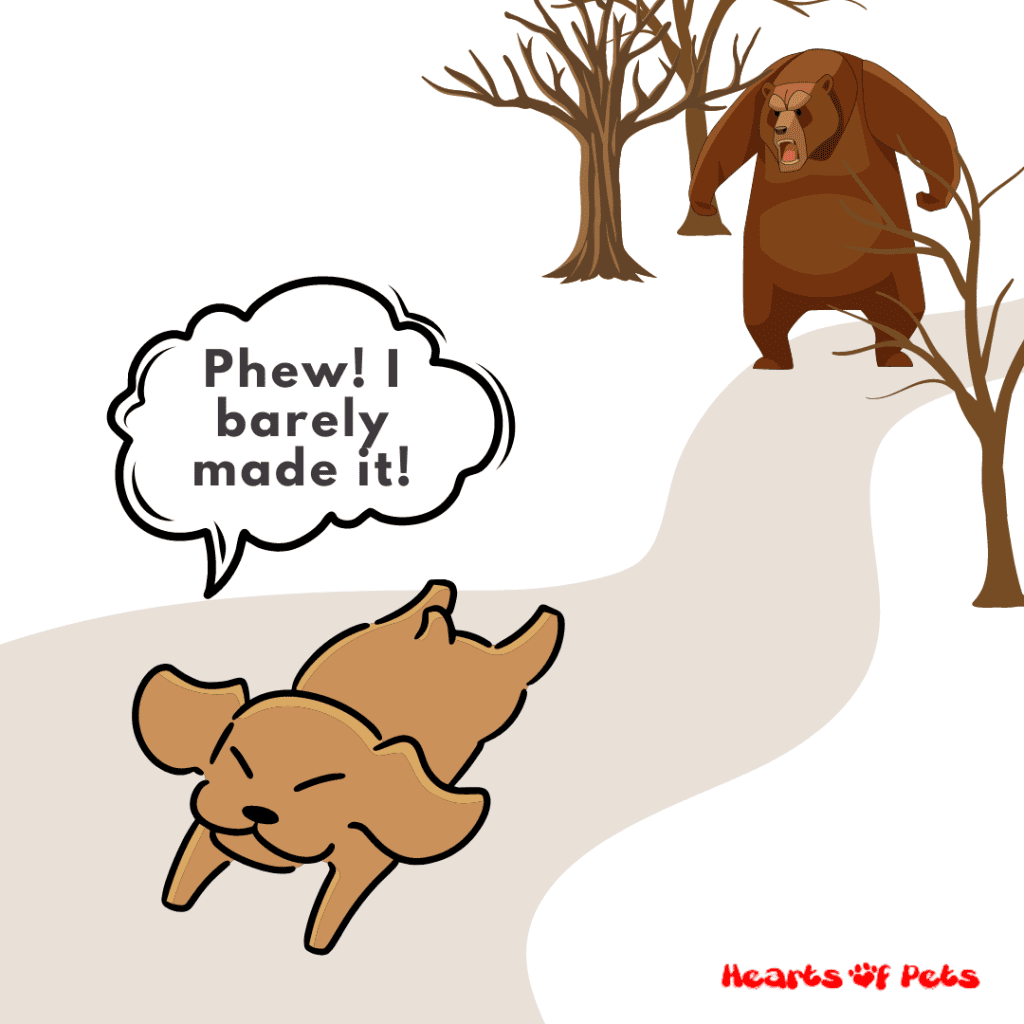
The dog had a bad experience with the bear, but now he knows how to avoid it in the future.
“Next time, I just won’t try as hard.” That doesn’t sound like a lesson learned to me. It sounds more like an excuse for giving up when things get tricky!
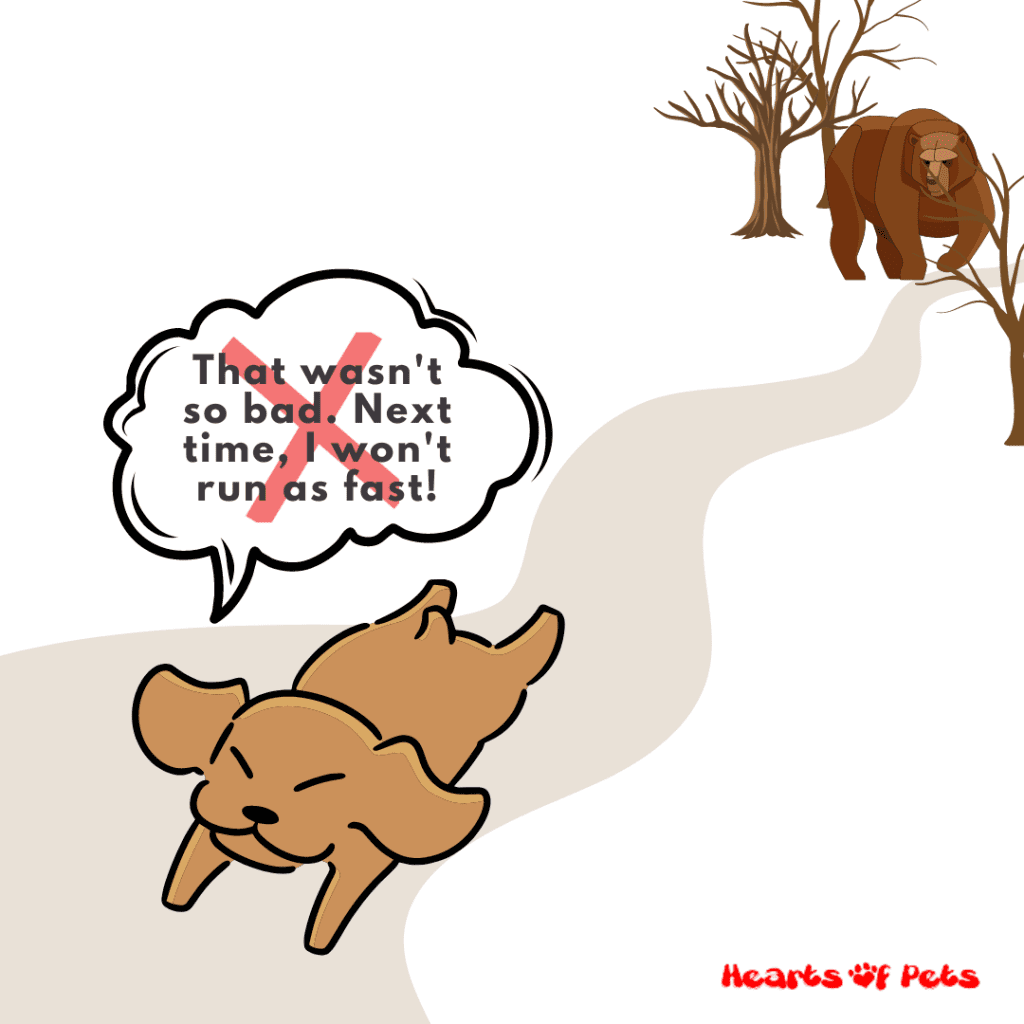
It’s essential to be honest, and realistic about stressful events so your dog can learn how he should react the next time something scary happens. If your dog practices proper training, your pup’s behavior will eventually modify, and you’ll see the desired results.
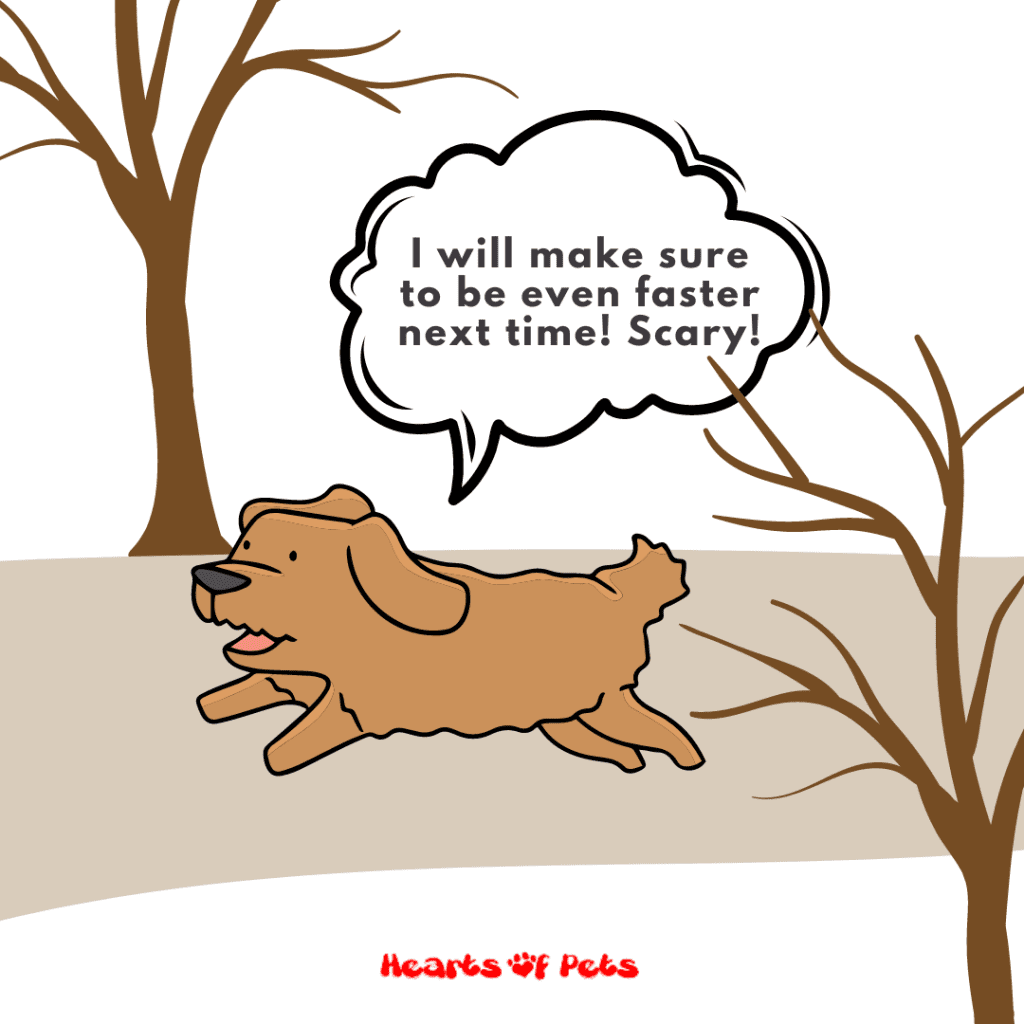
What does your dog think when you approach him too closely? A reactive dog must never feel “as if a bear chases him.” Getting within structure nano-seconds after their trigger will limit how much positive association they can make in reactive dog training.
When you bring your dog out for a walk, always keep them under control. A barking or lunging pet is not the right mood to create memories with. An off-leash adult reactive dog can be hazardous for other dog owners, so be sure to prevent putting your dog in a bad situation.
The number one goal for any reactive dog training session is to keep your dog from crossing the threshold.
Reactivity, Vulnerability, and Consistency
The idea that petting your dog can make it more social may not be accurate. According to an exciting study, contact with dogs alone did not lead them to become friends and neighbors of other people.
The difference between the group that got play dates and one without was like night vs. day. The dogs who were able to interact socially had much less anxiety and spent more time interacting with each other rather than being alone or sleeping all morning long–and best of all? They didn’t chew anything!
The dogs were tested after eight weeks of playing together. First, their reaction to a plastic dog was examined, and then they saw what it felt like when an actual canine walked by while on leashes.
By playing with the regular play dates, both times, I have noticed a difference in how dogs act. They seem much more relaxed and calm than when they’re alone! So keeping your dog away from strange dogs isn’t necessarily the best solution. If you can get your reactive dog to become friends with another dog, the next one becomes more accessible, and so on. Suddenly, going to the dog park can be fun, whereas it was once a headache for everyone involved.
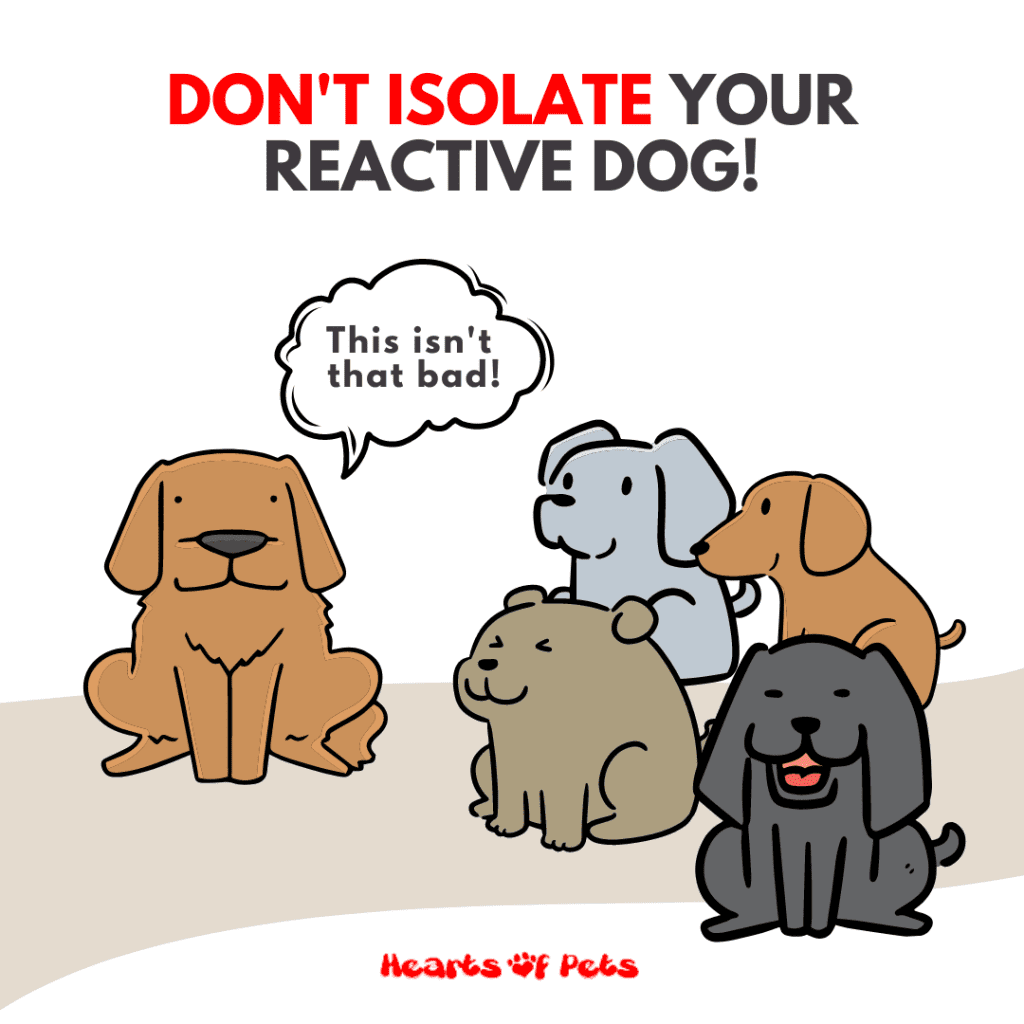
When you take your dog out for a walk, and he meets another pooch, his response may be one of anxiety or fear. However, regular exposure to other dogs will become less unusual so that meeting a new furry friend becomes more enjoyable. Be sure to make it part of your reactive dog training. Watch out for leash reactivity; some pups don’t love being restricted in the presence of another dog and are more reasonable and gentle when they’re free and on neutral ground, like a dog park.
If you have the opportunity to let your dog enjoy another pup’s company, go for it! It will help speed up his understanding of how friendly and enjoyable being around other dogs can be.
A word of warning: only give this a try if your dog has been tested and knows his limits. Make sure he likes dogs (and people) enough so that when faced with another one of those furry creatures, he won’t go over the threshold in an instant! Not confident doing leash work yet or just adopted a rescue dog lately? Work on reactive dog training before giving him accessible run-around group activity areas like parks, dog sports, etc.
Don’t give up hope!
Your dog can be happier if you change his feelings towards other dogs. Remember that no person or animal enjoys being scared, so show him a way to feel better and relax!
Until then, management can be your friend!
Here are some management concepts. Hang in there – it is not easy to own one, and you are doing great work daily!
Training Reactive Dogs – vs. Management
What exactly is management? What’s different about it from reactive dog training?
Reactive dog training is a long-term endeavor. It requires planning, commitment, and patience from both dog owner/ caregiver as well as the animal themselves to see accurate results with behavior modification techniques such as counter conditioning or desensitization training methods that can be used for various purposes ranging from house manners all of way up into professional levels where they are most likely going to require more guidance when interacting outside their usual environment.
Management is the key to successful dog training. You can train your pup all day, but if he chews on shoes when you aren’t looking? Put them away! And while this may not teach him anything new about chewing (that would be “trained”), at least his mouth isn’t destroyed anymore—and that’s what matters most in these situations anyway!
If he has trouble settling at night, you can put your puppy in his crate with a delicious bone.
Happy dogs make for better trainees. With proper management, an anxious or stressed dog can enjoy his life and reactive dog training sessions without fear of overreacting to a scary situation that could harm him if he escalates it too far and then possibly stop progress on the good days where things go more smoothly.
We must work on this together to ensure everyone is happy and safe.
Leash-Reactive Dog Training
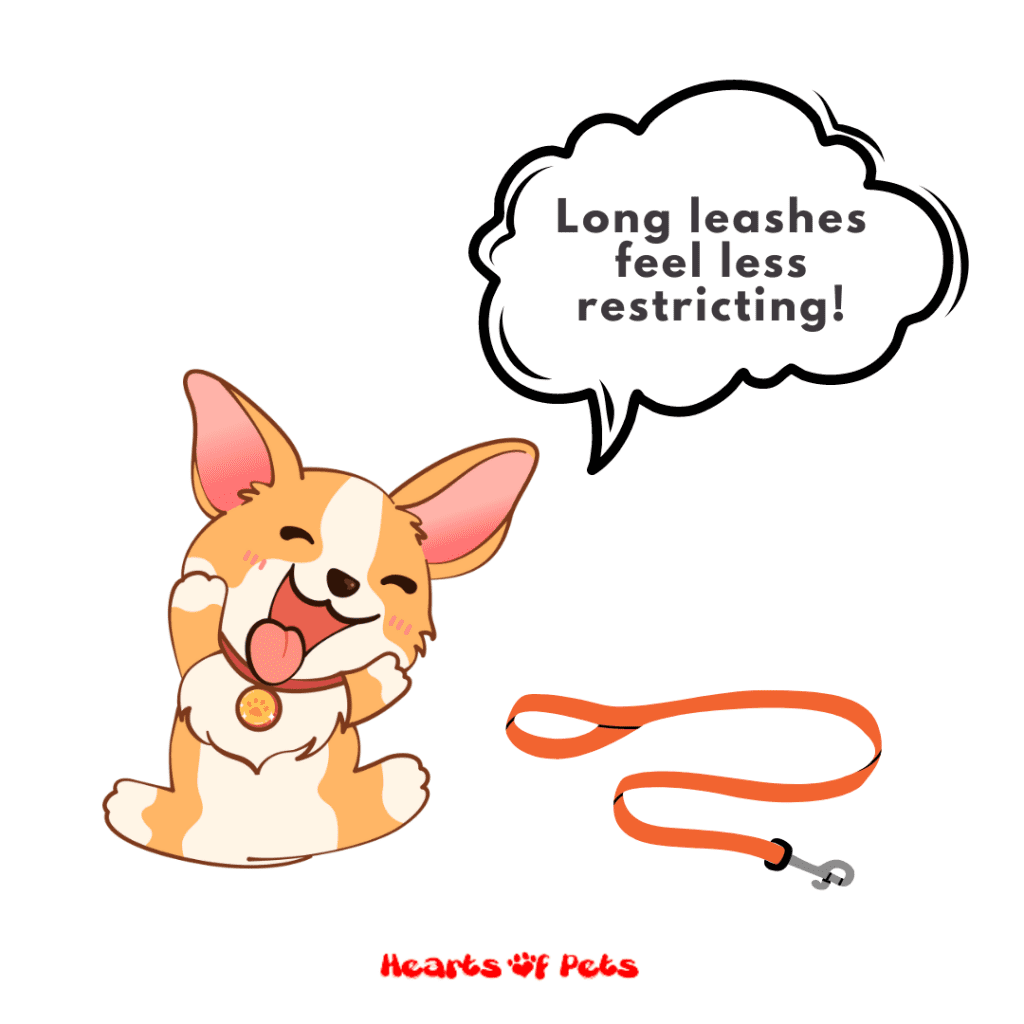
It sounds counterintuitive to put your reactive dog on a long line, but it is one way that you can control his behavior during reactive dog training. Barking and lunging at things are reactions he has when something stresses him out or upsets what’s been going well in the past few days, so using this technique will help reduce those responses and teach him where exactly these boundaries lie!
The truth is that having our reactive dogs on a short leash can increase their stress as it limits how they can use body language.
When our dog senses a potential trigger approach, we tend to wrap the leash around our wrist or hold it high up in the air. This makes him feel like there’s only one way out: outright attack.
So since you want to keep a healthy distance in any case, while your dog is at this length of the leash, he might benefit from being able to move his body naturally and use all four legs without restrictions.
Chewing As A Therapy
The goal of any caring pet parent should always be to have their dog not in an anxious state for as much time as possible, especially during reactive dog training. You can think about this: you’re providing them with calming and happy moments so they’ll lead happier lives overall.
Giving your furry friend various chew items will help him relax and be more content.
When I ask clients if their pup has to chew toys, they usually say yes and show me a collection of torn-apart stuffed animals or rope playthings.
These are not appropriate chew toys.
It’s important to know what your dog can and cannot chew on through reactive dog training. Fabric is not a good material for them, as it could result in an obstruction or death from consumption of these items! Be sure that any chews have been designed, so they don’t pose dangers if consumed by dogs like yours (you’ll notice this when you read more).
My favorite items are those made out of animal parts. Here’s my list to get you started: Bully Sticks, Kongs, Beef Hooves, and Deer Antlers.
What To Avoid
Here are some chew items you want to dodge, or at least be cautious about:
- Any Kind Of Artificial Toy
- Rawhides
- Nylabones
Sniff Walks
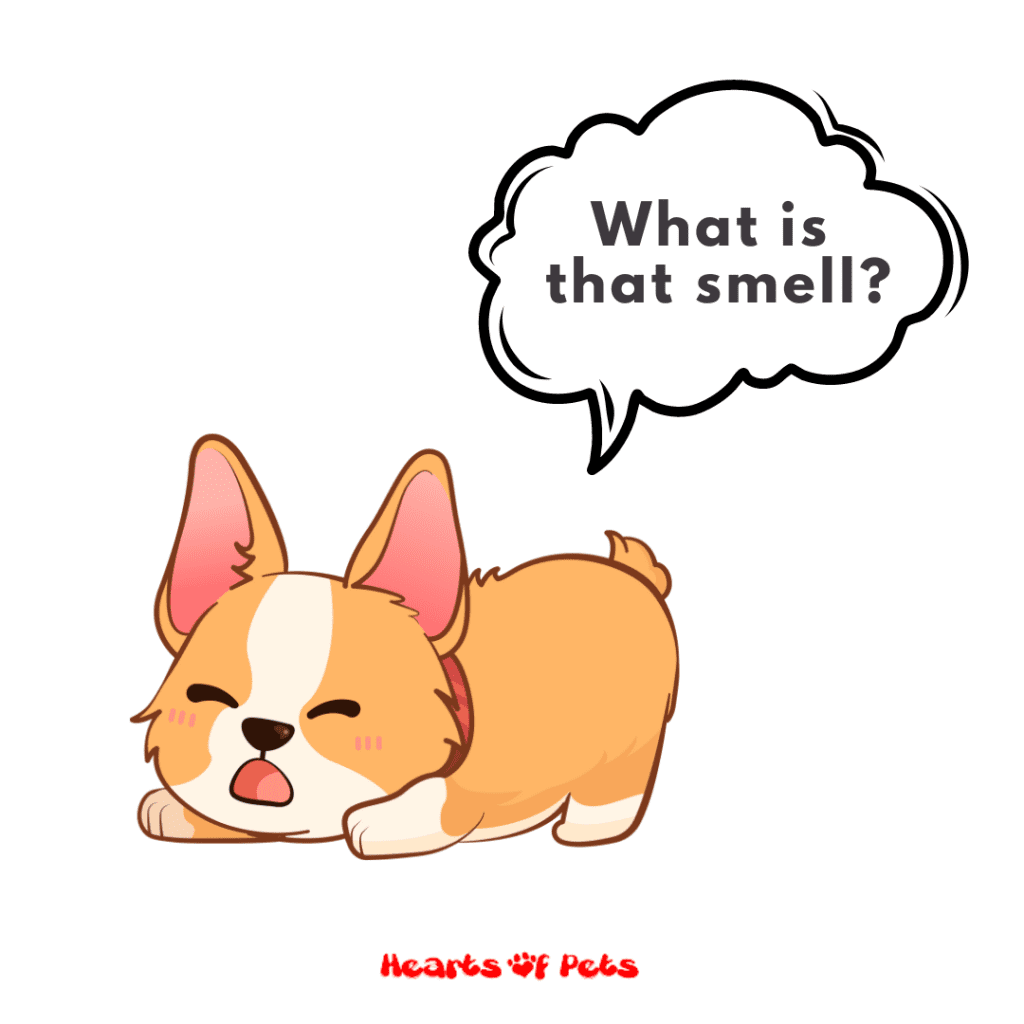
These days, we’re all too aware of how dangerous it can be for a dog to feel uncertain or insecure. That’s why you should never let your pet grow into an aggressive animal who doesn’t know his strength! If they show signs that this might happen, then take action before things get out of control – do everything in YOUR power so he’ll never need medical help again.
Having a dog can be a fantastic experience, but it’s not always easy. One of the biggest challenges is ensuring your pup gets enough exercise and playtime outside – especially if you live in a city with lots of Hills! The good news? They benefit from walks, so try taking them on short strolls near home or just going around town together for some sniffle time (I mean bonding).
My neighborhood is home to an aging puppy who lives in retirement, his owners taking him on two daily sniff walks as part of reactive dog training. One early morning and one late at night so as not to bother any other dogs that might be out walking during this time but ensure their senior dog gets plenty of fresh air too! He loves going for these short strolls -I’ve often watched from our living room window, seeing how slowly they go while gently wagging its tail every step along the way- always paying close attention to those sensitive noses.
Mental Exercise
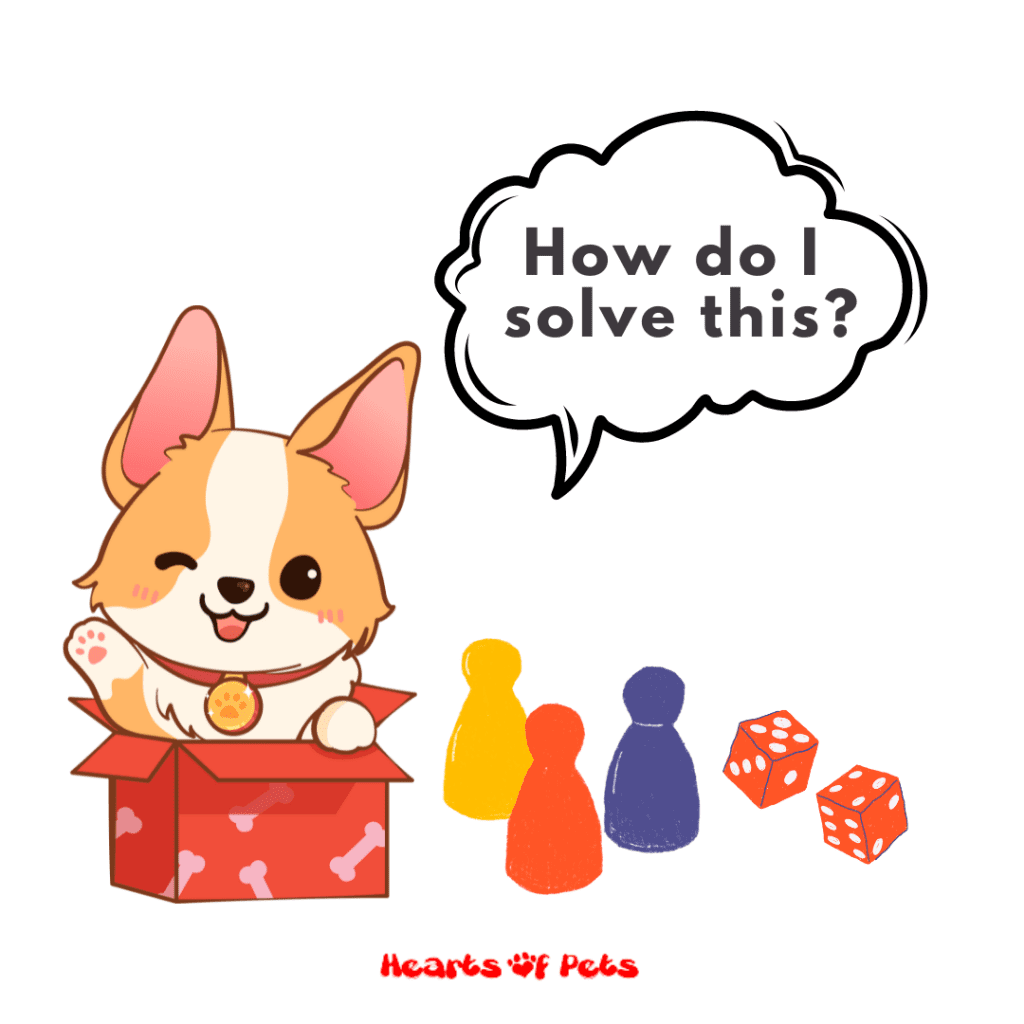
You may be unable to take your dog out for walks or let him run around the block. Suppose you’re noticing that he seems stressed. In that case, it can help with this issue by providing more appropriate exercise like taking them on long car rides and gradually increasing their time at doggy daycare until they are ready (and also making sure there’s always human supervision).
The most important thing for your dog’s mental well-being is not to be too hard on them when you train. Mental stimulation can also help dogs get more energized by having them solve puzzles or think strategically to solve challenges with intelligence instead of just using force.
Here are some ideas for Mental Exercises for reactive dog training:
- Hidden Treats – Hiding treats can be lots of fun. You could hide them under towels, plastic cups, or even turned-over boxes! The list goes on and includes all sorts that would give your dog a task to solve to find his reward with no clues and which one is best suited for you both – take advantage while they last because this game doesn’t last forever.
- Names Of Rooms – Take your dog on a fun hunt for treats (or toys) throughout the house. If he finds one in another room, get him to come back with you before showing it off proudly! Call out different rooms so that both of us know where things are located around here – this way, we can find everything faster and have more playtime together later down the line.
Routine Building
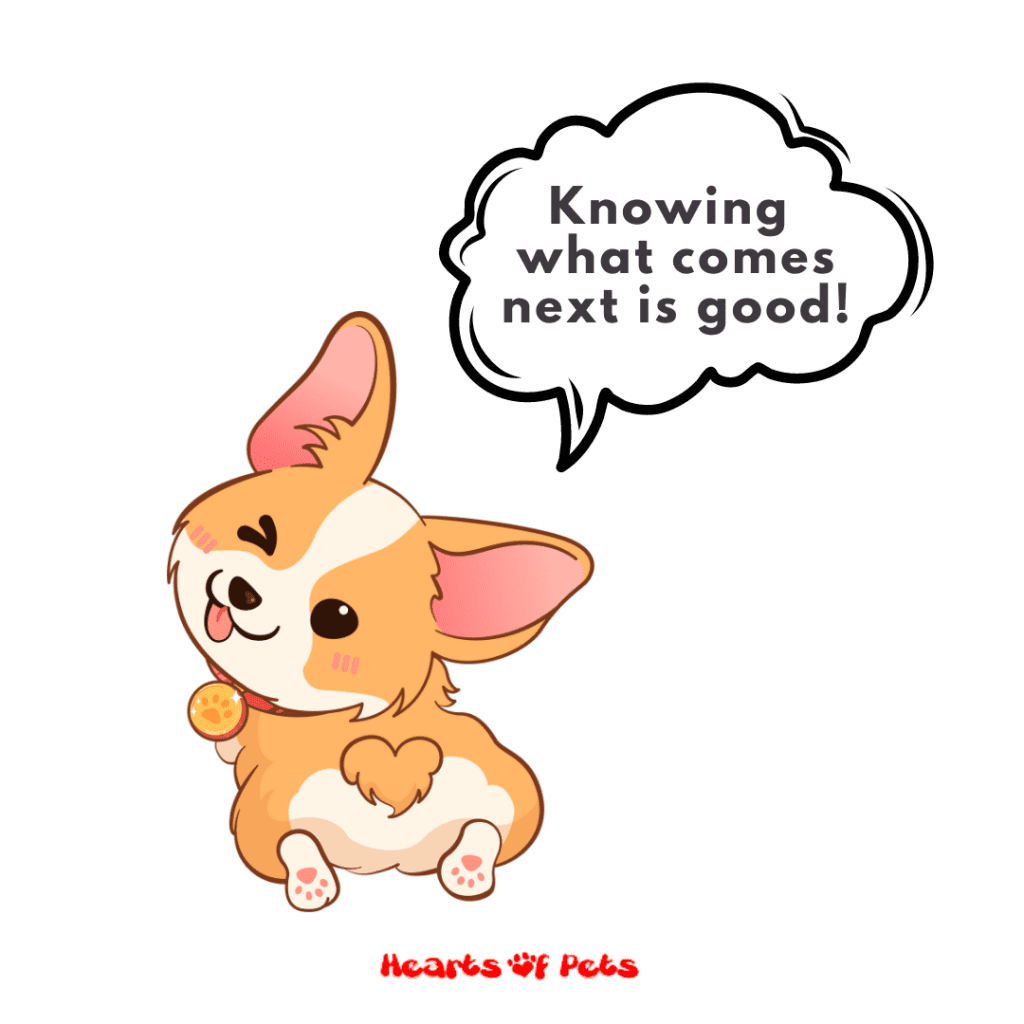
When our dogs sense that they’re not in control, it can make them feel uncomfortable and anxious. We can try our best to ensure that even if your dog is in a new place, they will always have something familiar.
The dog’s favorite game is to perform a trick routine until he can do it in his sleep. The “something” I mean by this isn’t just any old toy or mat, but rather an act where the pup practices and masters all these complicated moves without forgetting them.
We all know how important it is to make our dogs’ workouts fun! Don’t get me wrong, though–you still need some challenging exercises there too. It’s not about repeatedly doing the same old trick; each routine should have its signature moves so that you can be creative with your reactive dog training sessions while keeping things interesting for both of us.
Some tricks that work great for routine building are:
- Jump Over Leg – teaching your dog to jump over you is an easy trick for getting them excited about going on a walk or teaching basic commands like “sit.” Start by sitting with some treats nearby so they are interested in coming towards you instead of running away from the food (you might need help here). Once their head reaches where these goodies lie hidden beneath yours – praise & reward.
- Paws Up Side Stepping – the advanced version of Paws Up is when you can have a cookie in your hand to lure him and give some excellent rewards for moving laterally. Try being patient with this trick. Move slowly towards the side while facing away from it, then turn around once he does something correctly.
- Paws Up – teach your dog to put his front feet onto an elevated object while staying planted. This can be done on any surface from a bench or curbside, but he must remain stationary with both hind paws still touching the ground at all times! Use one cue for each type of reactive dog training aid so as not to confuse him when practicing this new skill – if you want more information about how I teach my clients, see it here.
- Hand Touch – A hand touch is a great way to get your dog’s attention and keep him focused on you. My Border Collies are often able, even when stuck in “the border collie freeze,” which makes it hard for them to respond with cues such as sit or down.
- Spin Left And Right – When you’re excited or expecting something good to happen, like coming home from work and mealtimes, your dog may naturally spin! You can put this on cue with the right food. If he does not naturally turn around when happy, though, we’ll need some help luring him into it, so use treats instead of just calling out “spins!”
Now that you have worked on your tricks, put them in order. This could be spin left then right-hand touch up next to me with paws uplift over my leg as a finish.
Finding The #1 Hobby
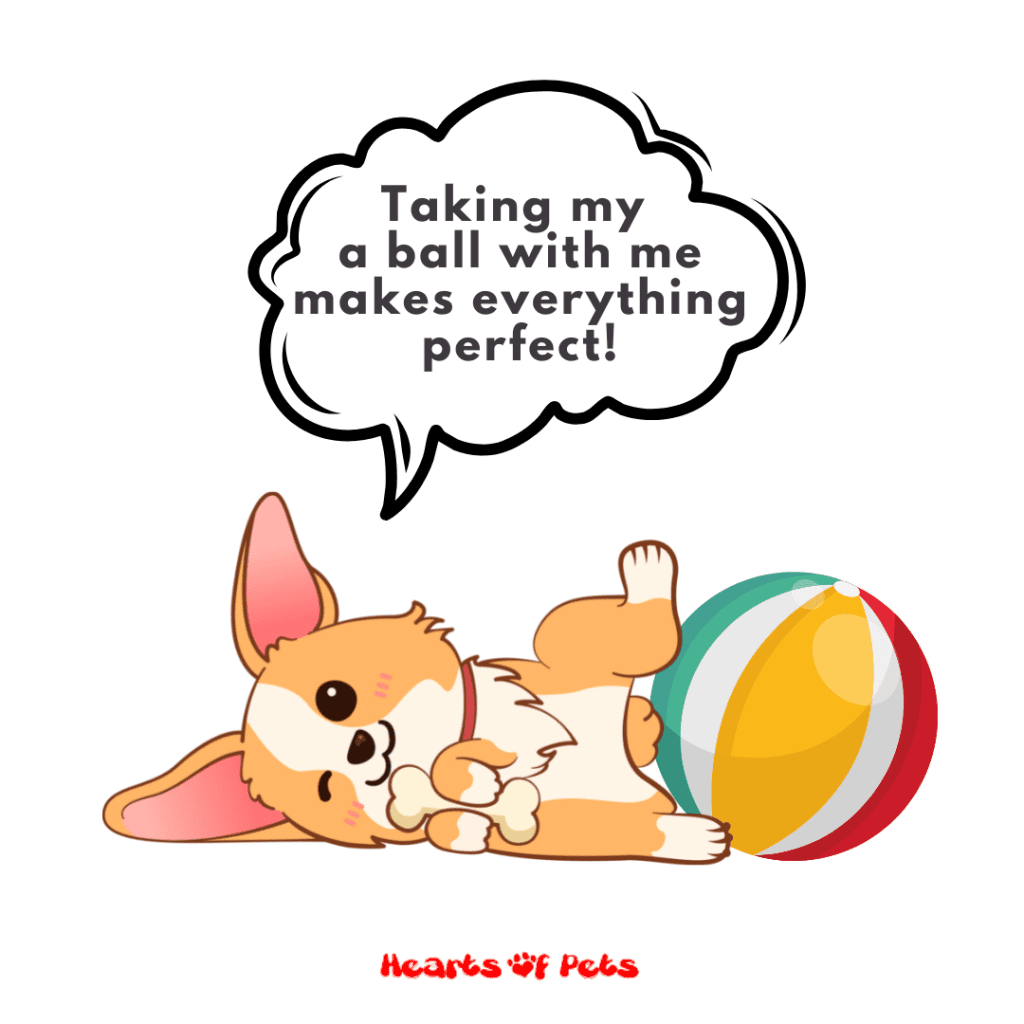
The reactive dogs I have known are focused on playing with their toy, usually a ball or Frisbee. They forget about everything else amid an intense game and often won’t notice if you come up behind them without warning.
Chasing after a thrown ball is one way to keep your dog’s mind active and satisfied. When you throw the toy, make sure it lands close by so they have an opportunity for some interactive playtime before getting up at their own pace again.
The more time your dog can spend playing in “the zone,” the better. Sometimes this will help with his transition into being around things that make him react negatively, like a Frisbee.
Helping Reactive Dog Training By Playing Frisbee
Most dog owners know that our furry friends can be excitable sometimes, so it’s essential to start by playing in a safe place. For many people, this is their yard. However, even if you don’t have one, there might still be options for finding an open space not frequented too often, such as school yards late evening (make sure it’s okay before using) or other unoccupied areas like parking garages, etc.
To get started, simply play with your pup there. Always make sure you follow the rules of playing and training:
- Pick Your Dog’s Happy Hour – Most dogs have a specific time of day when they’re more awake and alert than others. For many, these happy hours are in the morning or evening; if you ever notice your dog getting excited about something, it might be worth playing with him so that he doesn’t get restless later.
- Always Be Fun – We all know how frustrating it is to try and get the attention of our busy little dogs, but when they don’t comply with what we want them to or stop whatever fun thing that’s happening because sometimes these furry friends just need an instant mood booster.
What should you do? Be upbeat and friendly! Your pup will repay this kindness by being much more engaged in everything around him—including playing ball instead of peeing on everything nearby (or even taking over for someone else). - Don’t Overdo It – The next time you reactive dog training, aim for the mindset he left behind. If his desire to keep playing has worn off and there are signs of irritation or frustration in his behavior—you went too far! Instead, try ending on an agreeably happy note so as not to give him any reason why this session should end before it’s over-especially since we know how much our pets love being included whenever possible.
Reactive Dog Training Tips
The more people a dog sees, the less excited he gets. However, if you move to places with lots of other dogs and their owners, your furry friend will be just as happy running around having fun.
The long line is for safety, so we don’t want to approach people or dogs too closely. If your pup gets worked up enough that they charge towards the end of their leash, then I’m sorry.
Now you can play with him just like in your last location. Pay attention to being connected the whole time – we don’t want to give him too much opportunity to look around and potentially get worried about what’s there! For some dogs, getting them out of the car might be helpful before running off somewhere for five minutes or so while I grab my things; once that’s done, we return home together again.
Over time, your dog will start associating his fun with you and his frisbee to the park and perhaps even the people and/or dogs in the distance that he used to feel uneasy about. At the very least, he will learn that he can have fun and have a good time in public and that it is possible to ignore and tune out everything that might bother him for his frisbee.
Conclusion
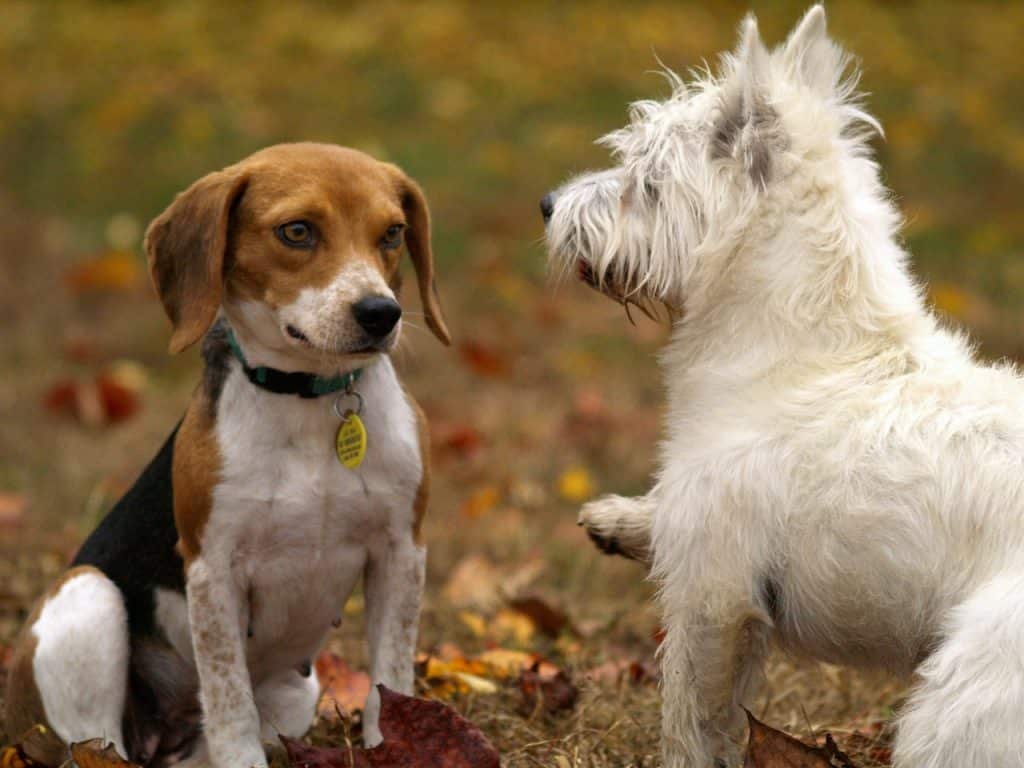
Congratulations on your new addition! A dog can be a great source of companionship and love, but only if he or she is adequately trained. This guide provides an overview of the most critical aspects of reactive dog training so that you and your pup can live happily together. Remember, it’s never too late to start training your dog – even adult dogs can learn new tricks with patience and consistency. You are doing great, no matter which step of your journey!
Have you started training your dog yet? If not, what are you waiting for? The sooner you get started, the sooner both of you will be able to enjoy each other’s company. Thanks for reading!
Frequently Asked Questions
Can you train reactivity out of a dog?
Dogs of any age can learn to improve their reactivity. You do need to keep in mind that the longer a behavior has been ingrained, it will take more time and effort to retrain them once you know about triggers or surroundings which cause these behaviors; however, we cannot predict if your dog may never act up again as long as he continues his recovery from this illness.
Can reactive dogs get better?
Reactive dogs can improve with time and patience. The first important step is not to let the dog ingrain his reactivity anymore by making changes in daily life for owners who believe he has a problem, like taking away favorite items or spending less quality one with withe pup at home. It may seem scary knowing that your furry friend could be prone to wrathful outbursts but there are ways you both might learn how better manage these emotions without hurting each other!
Why is my dog becoming more reactive?
The reactivity and fearfulness of a dog are determined by genetics, lack of socialization training to learn self-control, or frightening experience. A combination can lead the animal into an overreactive state where it responds negatively to specific situations or stimuli even if there are no other factors present.
How do you socialize a reactive dog?
Keep your dog close to you when passing others, turning corners, and going through doors. Stay out of their way while eating if you know she's aggressive around food.


